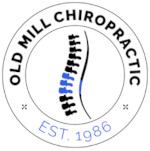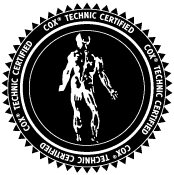Beyond Weak St Peters Back Muscles: How Exercise Reverses Unseen Spine Muscle Damage
If you're dealing with chronic back pain from spinal disc problems, the source of your pain may not be what you think—it's rarely just the discs. Studies reveal that erector spinae muscles—the key stabilizers running along your back—can experience fatty infiltration, a degenerative process where adipose tissue displaces healthy muscle fibers. This process diminishes your spine's natural support system and adds to ongoing St Peters back pain.
THE HIDDEN PROBLEM: FATTY MUSCLE INFILTRATION
When you have intervertebral disc disease, your paraspinal muscles undergo changes that go beyond basic weakness—they actually change at a cellular level. Research explains that "fatty infiltration of the erector spinae at the upper lumbar spine could be a landmark for low back pain" (1). This creates a vicious cycle: disc problems lead to muscle changes, which decrease spinal support, potentially worsening disc health over time.
The relationship between disc degeneration and muscle fat infiltration is complex and bidirectional. As noted by Jiang et al. (2), there happens to be a critical interaction between lumbar intervertebral disc degeneration and fat infiltration of paraspinal muscles, where these conditions influence each other in ways that can prolong back pain and dysfunction.
EXERCISE: YOUR PATH TO MUSCLE RECOVERY
So what's the upside? You can reverse this process through targeted exercise. A recent randomized controlled trial discovered that combined motor control training and isolated extensor strengthening produced superior outcomes compared to general exercise approaches for improving "lumbar paraspinal muscle health" in chronic low back pain patients (3).
This approach emphasizes retraining how your core stabilizers work as a team while targeting the weakened back muscles. Unlike general exercise programs, these targeted interventions reverse fatty infiltration and restore healthy muscle tissue.
WHAT THIS MEANS FOR YOUR RECOVERY
Working with your St Peters chiropractor at Old Mill Chiropractic to develop an exercise program that incorporates both motor control training and specific strengthening exercises can heal the muscle changes your disc problems have caused. As Rosenstein et al. (2025) explained, this comprehensive approach takes on both the mechanical and neuromuscular parts of your condition, opening the door to real recovery rather than quick fixes.
Remember, healing won't happen overnight, but with evidence-based exercises, you can transform deteriorated muscles into strong, pain-free tissue.
CONTACT Old Mill Chiropractic
Listen to this PODCAST with Dr. John Murray on The Back Doctors Podcast with Dr. Michael Johnson as he shares the effectiveness of the gentle protocols of The Cox® Technic System of Spinal Pain Management combined with exercise.


